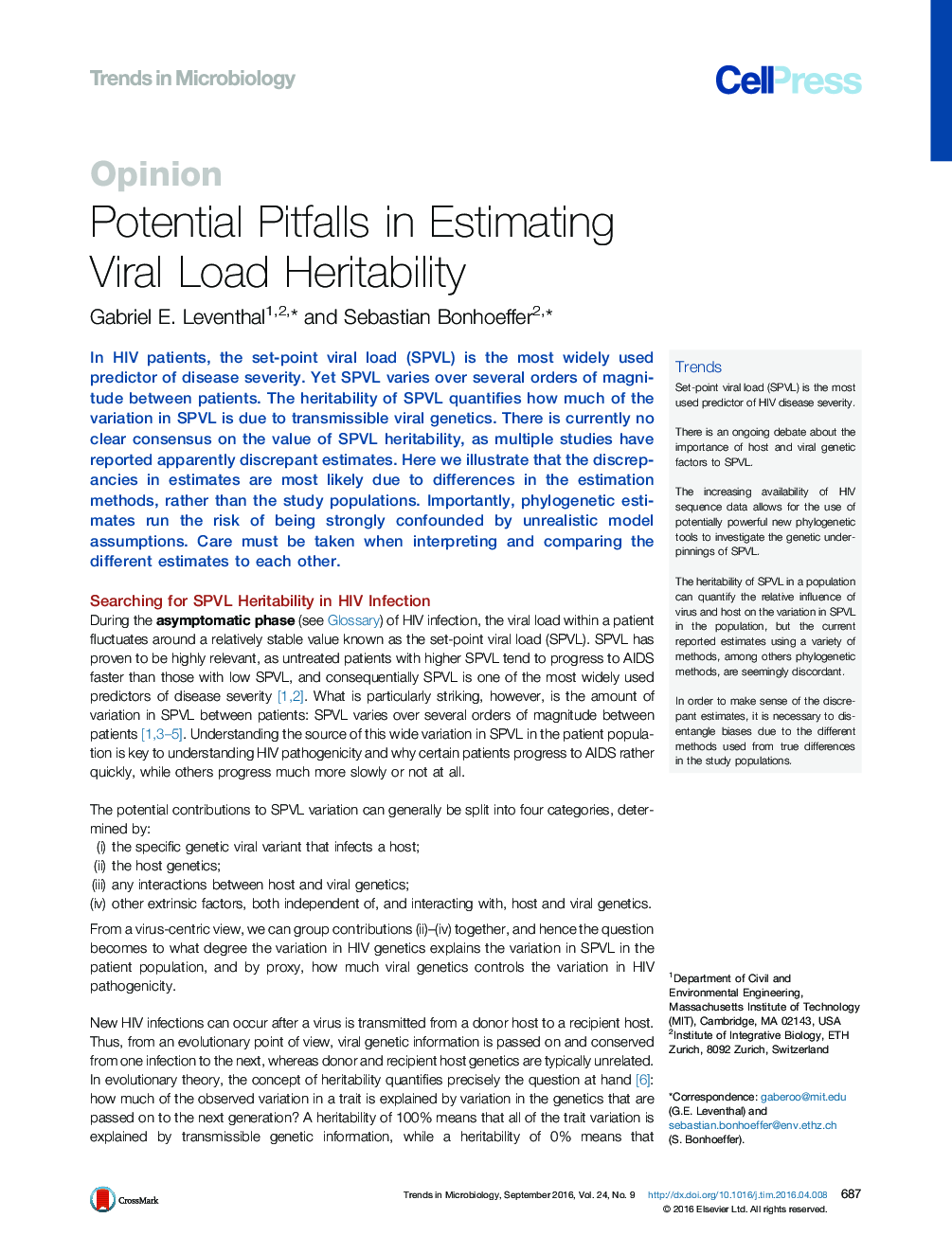| Article ID | Journal | Published Year | Pages | File Type |
|---|---|---|---|---|
| 3421691 | Trends in Microbiology | 2016 | 12 Pages |
In HIV patients, the set-point viral load (SPVL) is the most widely used predictor of disease severity. Yet SPVL varies over several orders of magnitude between patients. The heritability of SPVL quantifies how much of the variation in SPVL is due to transmissible viral genetics. There is currently no clear consensus on the value of SPVL heritability, as multiple studies have reported apparently discrepant estimates. Here we illustrate that the discrepancies in estimates are most likely due to differences in the estimation methods, rather than the study populations. Importantly, phylogenetic estimates run the risk of being strongly confounded by unrealistic model assumptions. Care must be taken when interpreting and comparing the different estimates to each other.
TrendsSet-point viral load (SPVL) is the most used predictor of HIV disease severity.There is an ongoing debate about the importance of host and viral genetic factors to SPVL.The increasing availability of HIV sequence data allows for the use of potentially powerful new phylogenetic tools to investigate the genetic underpinnings of SPVL.The heritability of SPVL in a population can quantify the relative influence of virus and host on the variation in SPVL in the population, but the current reported estimates using a variety of methods, among others phylogenetic methods, are seemingly discordant.In order to make sense of the discrepant estimates, it is necessary to disentangle biases due to the different methods used from true differences in the study populations.
